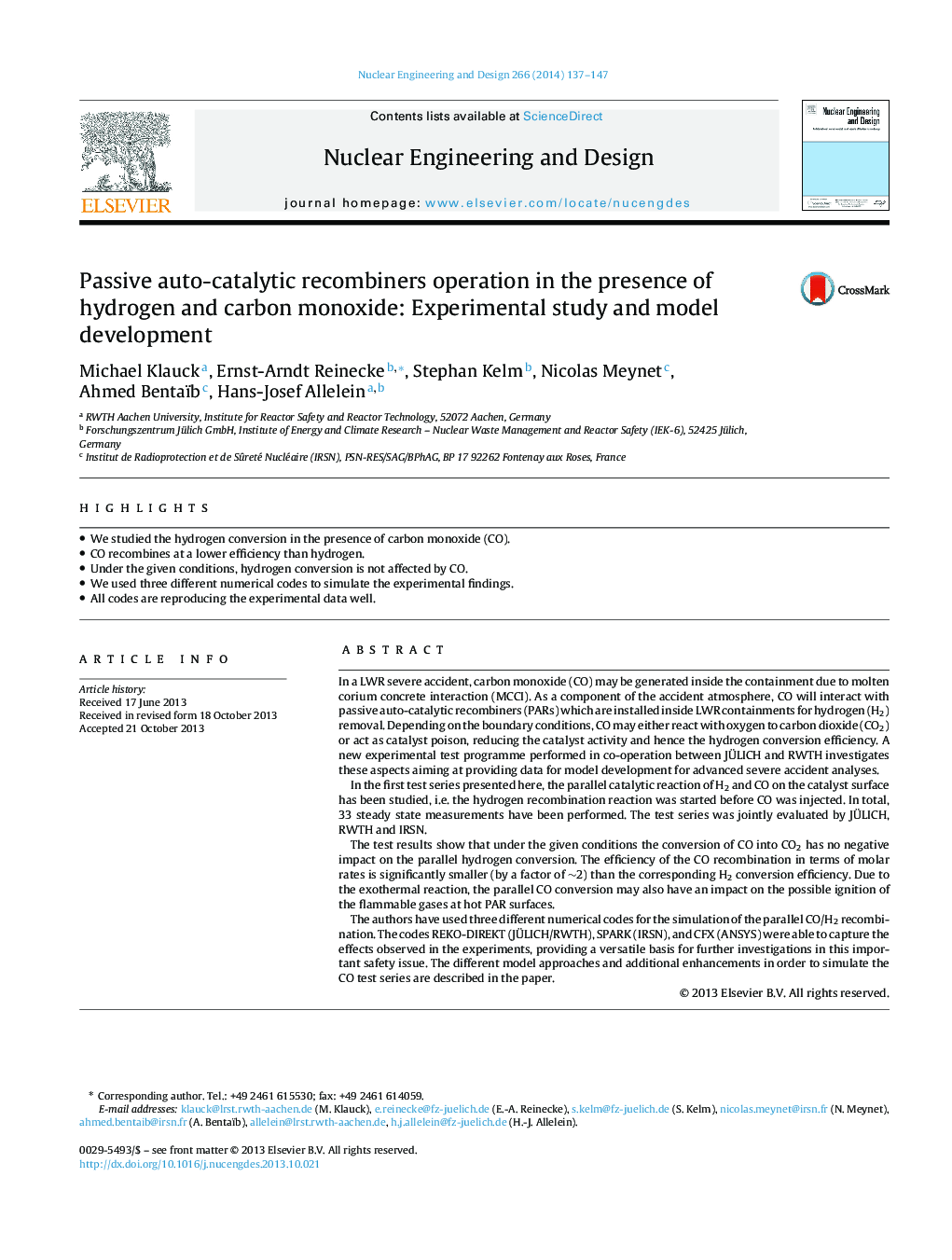| کد مقاله | کد نشریه | سال انتشار | مقاله انگلیسی | نسخه تمام متن |
|---|---|---|---|---|
| 296722 | 511737 | 2014 | 11 صفحه PDF | دانلود رایگان |

• We studied the hydrogen conversion in the presence of carbon monoxide (CO).
• CO recombines at a lower efficiency than hydrogen.
• Under the given conditions, hydrogen conversion is not affected by CO.
• We used three different numerical codes to simulate the experimental findings.
• All codes are reproducing the experimental data well.
In a LWR severe accident, carbon monoxide (CO) may be generated inside the containment due to molten corium concrete interaction (MCCI). As a component of the accident atmosphere, CO will interact with passive auto-catalytic recombiners (PARs) which are installed inside LWR containments for hydrogen (H2) removal. Depending on the boundary conditions, CO may either react with oxygen to carbon dioxide (CO2) or act as catalyst poison, reducing the catalyst activity and hence the hydrogen conversion efficiency. A new experimental test programme performed in co-operation between JÜLICH and RWTH investigates these aspects aiming at providing data for model development for advanced severe accident analyses.In the first test series presented here, the parallel catalytic reaction of H2 and CO on the catalyst surface has been studied, i.e. the hydrogen recombination reaction was started before CO was injected. In total, 33 steady state measurements have been performed. The test series was jointly evaluated by JÜLICH, RWTH and IRSN.The test results show that under the given conditions the conversion of CO into CO2 has no negative impact on the parallel hydrogen conversion. The efficiency of the CO recombination in terms of molar rates is significantly smaller (by a factor of ∼2) than the corresponding H2 conversion efficiency. Due to the exothermal reaction, the parallel CO conversion may also have an impact on the possible ignition of the flammable gases at hot PAR surfaces.The authors have used three different numerical codes for the simulation of the parallel CO/H2 recombination. The codes REKO-DIREKT (JÜLICH/RWTH), SPARK (IRSN), and CFX (ANSYS) were able to capture the effects observed in the experiments, providing a versatile basis for further investigations in this important safety issue. The different model approaches and additional enhancements in order to simulate the CO test series are described in the paper.
Journal: Nuclear Engineering and Design - Volume 266, January 2014, Pages 137–147